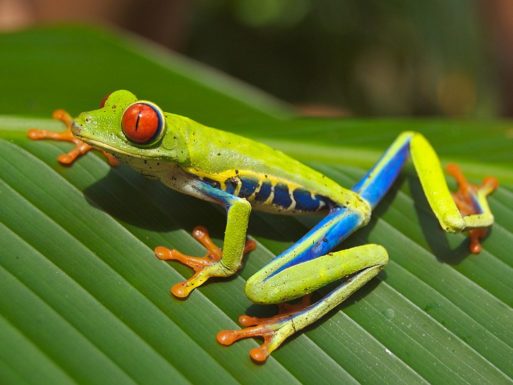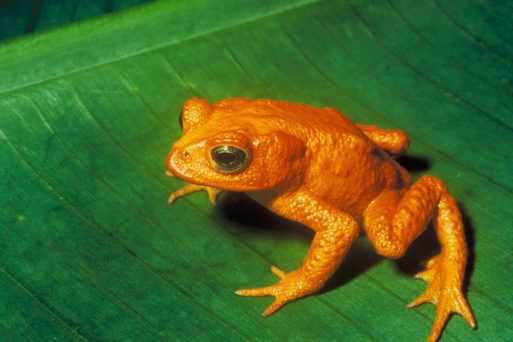 These days, most of us are familiar with the term “superbug” — a word commonly used to describe a type of infection-causing organism that conventional treatment can’t control. MRSA (methicillin-resistant Staphylococcus aureus) is one of the most ubiquitous. A once rare bacterial strain found mainly in hospital intensive care units, it now infects as many as 1.2 million hospitalized patients in the U.S. alone and kills about 120,000 of them each year. Other superbugs include a highly resistant strain of Mycobacterium tuberculosis known as extensively drug-resistant tuberculosis or XDR TB, and a recently discovered fungus, Candida auris, which has killed hundreds of people in the United States this year and is now spreading across the globe.
These days, most of us are familiar with the term “superbug” — a word commonly used to describe a type of infection-causing organism that conventional treatment can’t control. MRSA (methicillin-resistant Staphylococcus aureus) is one of the most ubiquitous. A once rare bacterial strain found mainly in hospital intensive care units, it now infects as many as 1.2 million hospitalized patients in the U.S. alone and kills about 120,000 of them each year. Other superbugs include a highly resistant strain of Mycobacterium tuberculosis known as extensively drug-resistant tuberculosis or XDR TB, and a recently discovered fungus, Candida auris, which has killed hundreds of people in the United States this year and is now spreading across the globe.
And then, of course, there are viruses, which may be prevented with vaccines but are almost impossible to treat once they take hold. From influenza to Ebola to HIV, they kill hundreds of thousands of people each year.
And yet none of these killers is nearly as deadly as a fungus with the innocuous-sounding name of “Bd” (short for “Batrachochytrium dendrobatidis.”) According to data gathered by researchers from the Australian National University, the superbug has wiped out over 500 species of amphibians — about 6.5 percent of the total — since it was first identified over 20 years ago. Of these, about 90 species are now extinct, and another 124 have been decimated to the point that they will likely disappear.
No other pathogen has ever wreaked such havoc. According to Ben Scheele, who led the research team, Bd “rewrote our understanding of what disease could do to wildlife.”
An Incredibly Efficient Killer
The class of animals known as amphibians is incredibly diverse. There are over 7,000 known species, made up of three subtypes or Orders: Gymnophiona or caecilians, which have a snakelike appearance; Urodela, which includes salamanders and newts; and Anura, which includes frogs and toads. Ninety percent of all amphibians are frogs.

The Golden Toad was endemic to the small city of Monteverde, in Costa Rica. It is now extinct.
Bd kills all three subtypes of amphibian with remarkable efficiency, eating away at their skin and causing immune dysfunction and fatal heart failure. It spreads readily in water and can exist for an extended time outside the host. And once it takes hold in an area, it is almost impossible to remove. Unlike some pathogens, which appear, disappear and then return, Bd, once established, seems to stay put.
In fact, the Bd fungus is so deadly and so efficient that it had wiped out millions of frogs before anyone even knew that it existed at all. According to Scheele, by the time the superbug was discovered in 1998, it had already completely destroyed at least 60 species and many more were on the verge of becoming extinct. When you consider the fact that amphibians have been on the planet for 370 million years, that’s an almost impossible fact to grasp.
Human’s Unwitting Role
As is the case with most ecological catastrophes, humans have had a hand in Bd’s spread. The superbug is believed to have originated in Asia, where it might have stayed if not for the impact of international trade. But in the early part of the 20th century, global trade was especially robust. And as humans shipped their cargo overseas, infected animals almost certainly hitched a ride. (Some may even have been taken along intentionally as pets.) The result: Bd now exists on every continent except Antarctica.
In fact, some scientists argue that global trade and the ease of international travel may be putting more and more animal populations at risk. According to Jodi Rowley, an Australian biologist with a focus on amphibian diversity, “Moving wildlife around the globe can and does have devastating consequences. There’s more awareness of the impact of invasive species like cane toads and rabbits, but this paper highlights that it may be the inadvertent hitchhikers—the parasites and pathogens we don’t see—that cause the most biodiversity loss.”
Although less plentiful than frogs, salamanders are also falling victim to Bd
What’s more, recent experience seems to support Rowley’s concerns. A paper co-authored by Matthew C. Fisher of the Department of Infectious Disease Epidemiology at the Imperial College, London, warned in 2012 that emerging fungi and fungal-like organisms are causing “some of the most severe die-offs and extinctions ever witnessed in wild species …” and urged nations across the globe to take steps to protect fragile ecosystems before it’s too late.
No Easy Answers
For now, there are no easy answers to controlling Bd. For reasons not fully understood, some frog species are showing signs of recovery, which could mean that they have evolved in a way that allows them to co-exist with the deadly superbug. Or it may simply mean that the current strain of Bd is waning, but will return in a new, hybridized form.
Meanwhile, scientists across the globe are searching for solutions. Some have set up captive breeding programs to try to preserve amphibian species in already infected habitats. Others are looking for ways to genetically manipulate the fungus to make it less virulent, while still others are trying to breed more resistant species of frogs. But none of these programs will likely have an impact for quite some time. According to Karen Lips, a professor of biology at the University of Maryland, “There’s no obvious way to deal with this. It says a lot about the scary nature of the disease that even after intense, long-term collaborations we haven’t come up with a viable solution,” she said.

 The World’s Most Efficient Superbug
The World’s Most Efficient Superbug


 “As Tears Go By” by Marianne Faithfull
“As Tears Go By” by Marianne Faithfull

 Funeral Favors Offer Visitors a Tangible Memento
Funeral Favors Offer Visitors a Tangible Memento















